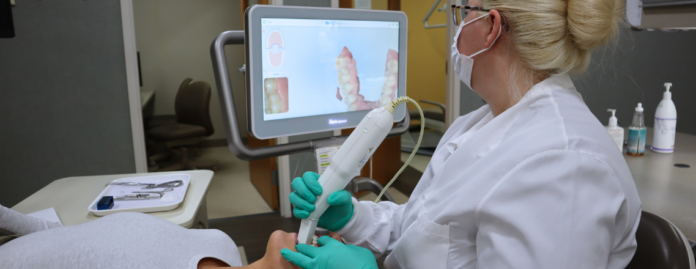What Is A Digital Impression?
Digital impressions are digital scans of the mouth that create a map of your teeth and gums. The scan allows your dentist or orthodontist to view your teeth on a computer screen in a 3-D model, which is more accurate than an X-ray or traditional mold.
Digital impressions, or 3-D intraoral scans, are captured by your dentist’s assistant, who moves a small wand around the inside of your mouth. As the dental assistant runs the wand along your teeth and gums, the wand captures photos and takes measurements, then stitches countless small images together instantly to form a precise image and map of your mouth.
How Are Digital Impressions Used For Braces And Orthodontia?
Digital impressions help an orthodontist create a more accurate map of your teeth, making it easier to examine your teeth and bite from different angles. This improved visualization allows them to better plan the most efficient and stable treatment plan for moving your teeth. It also helps to determine the best way to place braces and whether additional appliances will be needed. Having a digital impression means that you will have more precise measurements on tooth sizing and spacing. This allows for a more accurate care plan for braces, retainers, and aligner trays.
A digital impression coupled with a 3-D panoramic X-ray help to guide treatment and care in the most accurate way possible.
Digital impressions are also better for patient comfort because there are no gooey impression materials. Patients find the scanning process far more enjoyable than traditional impressions. The other benefits are that the digital models don’t require physical storage space, don’t chip or break, and can be reprinted with a 3-D printer as needed. They offer a very accurate alternative to traditional plaster casts. They also allow for faster turnover with the lab because you can send a file to a lab and they can instantly print the model with a 3-D printer, rather than having to physically transport a delicate model to the lab.
They are also a fun tool to show patients their teeth and bite. It is also much easier to alter a digital cast and show patients how their teeth might look if you have to remove a tooth or something similar.
Credit – Dental Associates



























